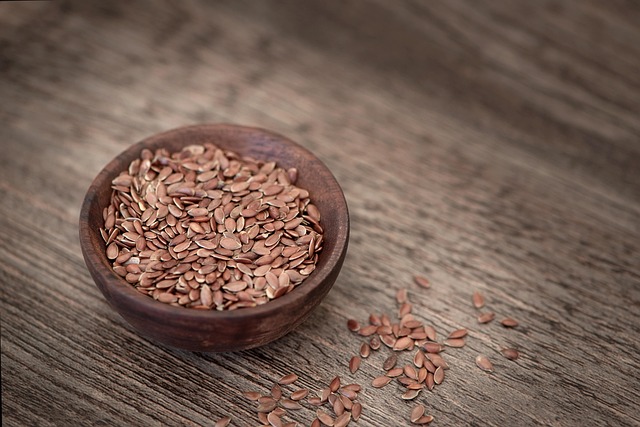Echinacea, a group of flowering plants native to North America, has long been used in traditional medicine to treat infections and boost the immune system. Among its most popular applications is the prevention and alleviation of the common cold—a viral infection that affects millions of people worldwide each year. While echinacea supplements, teas, and extracts are widely marketed as natural remedies for colds, the scientific community remains divided on their efficacy. In this article, we will explore the science behind echinacea’s potential benefits, its mechanisms of action, and the evidence supporting—or refuting—its role in combating colds.
What Is Echinacea?
Echinacea refers to several species of plants, with Echinacea purpurea , Echinacea angustifolia , and Echinacea pallida being the most commonly used in herbal remedies. These plants contain a variety of active compounds, including alkamides, caffeic acid derivatives, polysaccharides, and flavonoids, which are believed to contribute to their medicinal properties. Historically, Native Americans used echinacea to treat wounds, infections, and respiratory conditions, laying the groundwork for its modern-day use as an immune-supportive agent.
Today, echinacea is primarily consumed as capsules, tablets, tinctures, or teas, often marketed as a way to reduce the duration and severity of cold symptoms. But does it actually work?
How Echinacea May Work: Mechanisms of Action
To understand echinacea’s potential effectiveness, it’s important to examine how it interacts with the immune system. Researchers propose several mechanisms through which echinacea might influence the body’s response to viral infections like the common cold:
1. Immune System Modulation
Echinacea is thought to stimulate the immune system by increasing the production of white blood cells, such as macrophages and neutrophils, which play a key role in fighting off pathogens. It may also enhance the activity of natural killer (NK) cells, which target infected or abnormal cells.
2. Anti-Inflammatory Effects
Inflammation is a normal part of the immune response, but excessive inflammation can prolong cold symptoms. Some studies suggest that echinacea contains anti-inflammatory compounds that help regulate the body’s inflammatory response, potentially reducing discomfort associated with colds.
3. Antiviral Properties
Certain components of echinacea, such as caffeic acid derivatives, have demonstrated antiviral activity in laboratory settings. These compounds may interfere with the ability of viruses to replicate, thereby limiting their spread within the body.
4. Mucosal Protection
Echinacea may support the integrity of mucous membranes in the respiratory tract, acting as a barrier against viral entry. This could theoretically reduce the likelihood of infection or minimize the severity of symptoms once a cold takes hold.
Scientific Evidence: Does Echinacea Work?
Despite centuries of traditional use, the scientific evidence regarding echinacea’s effectiveness in combating colds is mixed. Here’s a breakdown of what research has revealed so far:
Supportive Findings
- Reduced Duration of Symptoms: Several randomized controlled trials have found that echinacea supplementation can shorten the duration of cold symptoms by about 1.5 to 2 days. For example, a meta-analysis published in The Lancet Infectious Diseases concluded that echinacea reduced the risk of developing a cold by 58% and shortened its duration by approximately 1.4 days.
- Preventive Potential: Some studies suggest that regular use of echinacea may lower the incidence of colds, particularly in individuals who are frequently exposed to viruses (e.g., healthcare workers or schoolchildren).
- Symptom Relief: Certain preparations of echinacea appear to alleviate specific cold symptoms, such as sore throat, nasal congestion, and coughing, though the effects vary depending on the formulation and dosage.
Inconclusive or Negative Results
- Variability in Products: One major challenge in studying echinacea is the lack of standardization across products. Different species, parts of the plant (roots vs. flowers), extraction methods, and dosages can lead to inconsistent results.
- Mixed Clinical Trials: Not all studies have shown positive outcomes. A review by the Cochrane Collaboration, a respected organization specializing in evidence-based medicine, analyzed multiple trials and found “weak” evidence for echinacea’s ability to prevent or treat colds. The authors noted significant variability in study designs and quality, making it difficult to draw definitive conclusions.
- Placebo Effect: Some researchers argue that any perceived benefits of echinacea may be due to the placebo effect rather than its biological properties. Expectations about the herb’s effectiveness could influence subjective reports of symptom improvement.
Factors Influencing Efficacy
Several variables affect whether echinacea works for an individual:
- Species and Preparation: As mentioned earlier, different species and formulations yield varying results. Echinacea purpurea tends to perform better in clinical trials compared to other species.
- Timing of Use: Starting echinacea at the first sign of cold symptoms—or even before exposure to viruses—may maximize its potential benefits. Delayed use might diminish its effectiveness.
- Dosage: Higher doses of echinacea seem to produce stronger effects, but exceeding recommended amounts can increase the risk of side effects.
- Individual Differences: Genetic factors, overall health, and baseline immune function can influence how someone responds to echinacea.
Safety and Side Effects
For most people, echinacea is considered safe when used short-term (up to 8 weeks). However, some individuals may experience mild side effects, including:
- Gastrointestinal issues (e.g., nausea, stomach pain)
- Dizziness
- Headaches
- Allergic reactions, especially in those sensitive to plants in the daisy family (e.g., ragweed)
Pregnant or breastfeeding women, as well as individuals with autoimmune disorders or allergies, should consult a healthcare provider before using echinacea, as its safety in these populations has not been fully established.
Practical Tips for Using Echinacea
If you decide to try echinacea for cold prevention or treatment, keep the following tips in mind:
- Choose High-Quality Products: Look for reputable brands that provide clear information about the species, part of the plant, and concentration of active ingredients.
- Follow Dosage Guidelines: Stick to the manufacturer’s recommendations unless advised otherwise by a healthcare professional.
- Start Early: Begin taking echinacea at the onset of cold symptoms—or during periods of high exposure—to potentially mitigate their impact.
- Combine with Other Strategies: Echinacea should complement, not replace, good hygiene practices like handwashing, adequate sleep, hydration, and a balanced diet.








